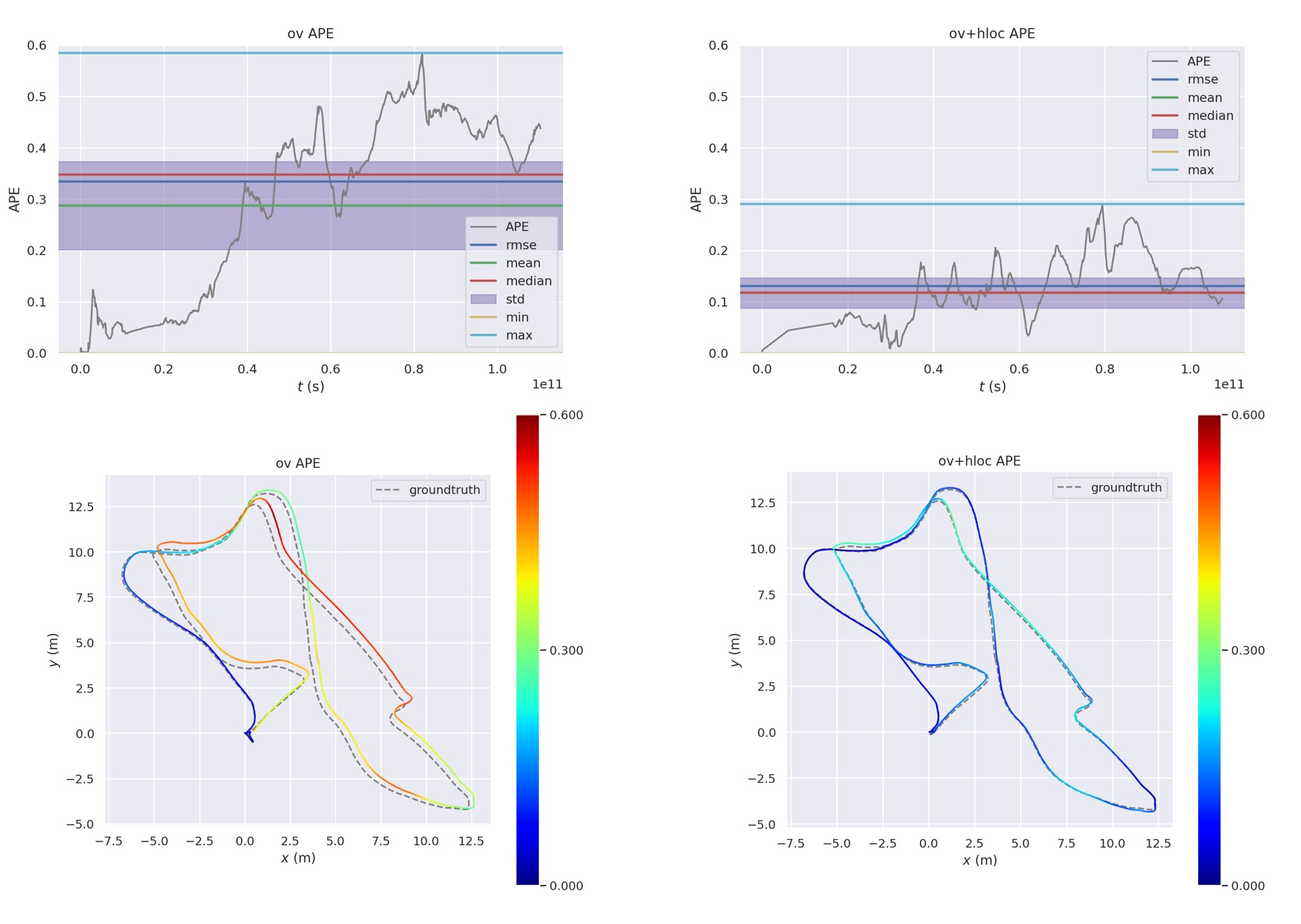Using Hierarchical-Localization instead of DBoW2 for loop closure. This was originally part of my undergraduate final project, where I worked on improving the loop closure module of VINS-Fusion. I found it just right for providing a loosely coupled pose graph for OpenVINS.
Thanks to the excellent global pose graph optimization provided by VINS-Fusion, this project performs well on the EuRoC dataset.
In the application scenario you can use COLMAP to build SfM maps (using SuperPoint and NetVLAD). The use of a priori maps can give you more accurate positioning results and no accumulative errors.
-
Ubuntu and ROS - noetic/Installation/Ubuntu - ROS Wiki This will help you to install a series of dependencies such as OpenCV.
-
OpenVINS - https://docs.openvins.com/gs-installing.html
-
Ceres Solver - https://github.com/ceres-solver/ceres-solver
-
PyTorch and libtorch - https://pytorch.org/get-started/locally/
For libtorch, all you need to do is unzip it and fill the file path into loop_hloc/CMakeLists.txt line 22.
# set your own libtorch path set(TORCH_PATH */libtorch/share/cmake/Torch)
# setup our workspace
mkdir -p ~/workspace/catkin_ws_ov/src/
cd ~/workspace/catkin_ws_ov/src/
# repositories to clone
git clone https://github.com/rpng/open_vins.git
git clone https://github.com/Li-Jesse-Jiaze/ov_hloc.git
# go back to root and build
cd ~/workspace/catkin_ws_ov
catkin buildDownload SuperGluePretrainedNetwork/models/weights and place them in support_files/Networks/weights.
cd ~/workspace/catkin_ws_ov/src/ov_hloc/support_files/
python convert_model.pyroslaunch ov_msckf subscribe.launch config:=euroc_mav # term 1
rosrun loop_hloc loop_hloc_node ~/workspace/catkin_ws_ov/src/ov_secondary/config/master_config.yaml # term 2
rviz # term 3
rosbag play your/dataset/path/V1_01_easy.bag # term 4select config/vins_rviz_config.rviz as config in rviz
The pose graph was not very smooth when I tested it on my laptop(RTX 2060 Max-Q 65W). This is mainly because my NetVLAD is using a VGG16 (it tooks more than 50ms for each frame 😠). It would be better to use a lighter backbone (e.g. MobileNetV3) and fine-tuning NetVLAD for your application scenario.
Here's a simple video of it working with VINS-Fusion.

